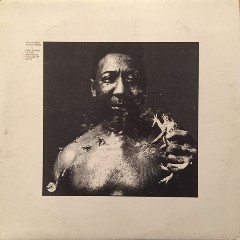Muddy Waters - After The Rain (1969)
Muddy Waters - After The Rain (1969)

1 I Am The Blues 2 Ramblin’ Mind 3 Rollin’ And Tumblin’ 4 Bottom Of The Sea 5 Honey Bee 6 Blues And Trouble 7 Hurtin’ Soul 8 Screamin’ And Cryin’ Bass – Louis Satterfield Drums – Morris Jennings Guitar – Pete Cosey, Phil Upchurch Harmonica – Paul Oscher Organ – Charles Stepney Piano – Otis Spann
After the Rain dates from the most controversial period in Muddy Waters' history -- along with its predecessors, Electric Mud (probably the most critically despised album in Muddy's catalog) and Brass and the Blues (an effort to turn him into B.B. King), it came out of an era in which Chess Records was desperately thrashing around trying any musical gambit to boost the sales of its top blues stars. But unlike Electric Mud, in which the repertoire selected by producer Marshall Chess was mostly unsuited, and the musical settings provided by Phil Upchurch, Pete Cosey et al. were too loud and too frenetic for Muddy's style of singing, After the Rain simply let him be Muddy Waters. The album mostly featured higher-wattage remakes of a lot of familiar repertoire, including "Honey Bee" and "Rollin' and Tumblin'," and also reintroduced Muddy's own electric guitar, which had mostly been unheard on his recordings of the 1960s (and completely missing from Electric Mud). And on the tracks where he does play lead, they're first-rate representations of his talent as it stood at the tail end of the 1960s, powerful and bold, like a king (or maybe even a god) surveying a blues landscape he had shaped, and ranging across it freely. Even the tracks on which the heavily modernistic touches appear (such as Cosey's bowed guitar on "Bottom of the Sea") don't harm the flow or tone of the overall album. The latter is as close to an experimental track as After the Rain gets, and Muddy gets into the spirit of the piece as a singer far better here than he did on most of the preceding album. But mostly he is just himself here, not overly bold -- which may be the record's major flaw, but an understandable one after the reception accorded Electric Mud -- and not too much different from the previous decade. And it's immensely pleasing on that basis alone, even if the sales figures didn't reflect this -- it would take time for Muddy to rebuild his old audience, and he and Chess Records would go on to try other settings, working with young white blues enthusiasts (Fathers and Sons) and U.K. rock admirers (The London Muddy Waters Sessions) with varying results, some of them (The Woodstock Album) award-winning. But After the Rain, though ignored at the time, was a worthy and thoroughly worthwhile addition to his discography, and not just as a curio -- moments like "Honey Bee," "Blues and Trouble," "Screamin' and Cryin'," and "Hurtin' Soul" show what he could do with these younger players in tow (as opposed to the other way around on Electric Mud), and all of it will bring a smile to any real fan. ---Bruce Eder, AllMusic Review
download (mp3 @320 kbs):
yandex mediafire ulozto gett bayfiles








